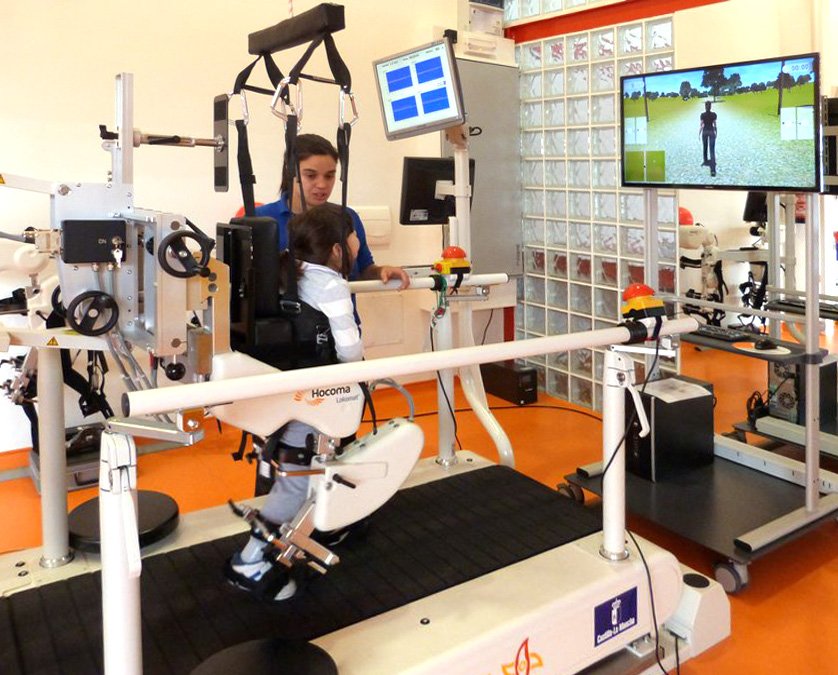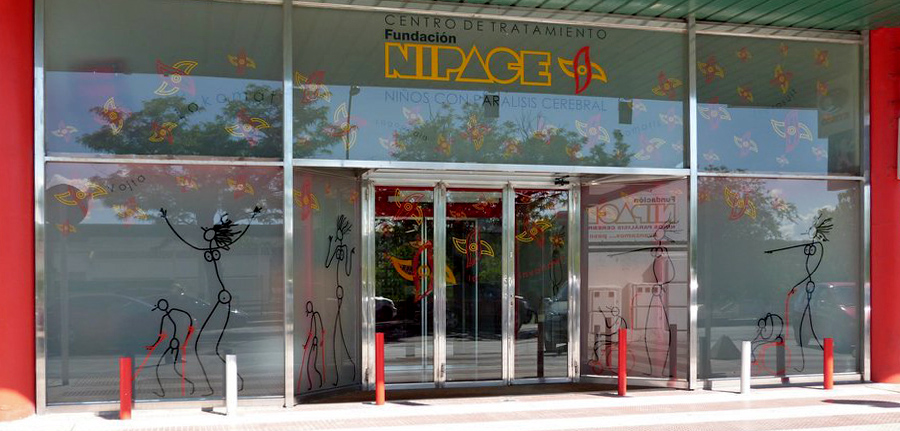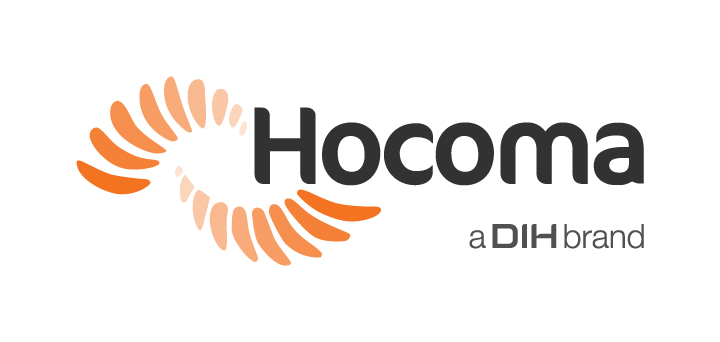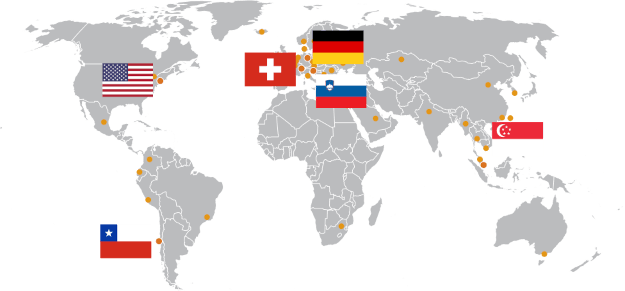April 27, 2017
Clinical Integration of the Lokomat®: NIPACE Foundation, Spain

Maria Teresa Vega Escolar, Clinic Director
In our clinic we use the latest techniques and therapy approaches with the aim to offer CP patients the best possible treatment.
Lokomat therapy is a standard in our clinic. We offer our patients long term treatments in an ambulatory way. We also offer Lokomat packs to external patient to complement their conventional treatment.
Here we describe our clinical setting and hope that it serves as an example to support other clinics that also work with robotic equipment.
Patient Group
NIPACE is a pediatric out-patient center. We are a private non-profit organization which was founded by parents of a Cerebral Palsy (CP) girl with the aim of offering her -and other CP children- the best possible treatment. Therefore, our focus patients are children who suffer from cerebral palsy and we offer them long term as well as intensive summer treatments.
Most CP patients need gait training and therefore most of our patients are Lokomat patients.
We have three type of therapy plans including Lokomat therapy in our clinic:
- Regular treatment in our clinic (including Lokomat).
- Intensive Therapy during the summer holidays.
- Specific Lokomat treatment: Patients that otherwise are treated in other clinics and come to us specifically for Lokomat therapy.
Prescription: Inclusion Criteria
In general terms, we apply Lokomat therapy as part of the treatment for gait training to all the patients as far as no contraindications are found. We don’t exclude any patient. We give every child a chance to be treated and don’t dismiss any patient before trying and seeing if he shows improvements.
Most of our patients don’t walk independently. Not expecting the patient to achieve an independent walk in the future is not a reason for us to exclude them from receiving Lokomat therapy. This is because we have observed great improvements after Lokomat therapy also in this patient group.
Duration and Frequency of Lokomat® Sessions
All Lokomat sessions are scheduled in 1h slots, and the patient walks for 30-45 minutes.
Regarding the frequency of Lokomat sessions, we differentiate two groups:
- The intensive treatment group receives daily sessions for 1-3 months. These are typically patients that come over the summer holidays.
- The regular therapy group receives 1-2 Lokomat sessions per week in combination with the overall rehabilitation program (hydrotherapy, osteopathy, conventional physical therapy).
Adjusting the Parameters on the Lokomat®
We start with 50% BWS (Body Weight Support) and 100%Guidance Force. As the patient is walking safe, we reduce both parameters as much as possible already on the first session. Over sessions we gradually continue decreasing it. The limit is defined when the patient is not having a “proper” gait pattern anymore (e.g. falling on his knees).

Patient receiving Lokomat therapy.
Organization: Therapy Team
We are a group of 9 physiotherapists and one rehabilitation doctor. We also collaborate closely with the patient’s specialist doctors at the hospital or other external locations. All our therapists are certified and well trained to work with the Lokomat as well as with all other therapies and devices which we use as part of the treatment.
For new therapists, we have an internal training program. It consists on an initial intensive training and then 2 weeks of supervision working on the Lokomat with an experienced user.
We work on a 1:1 patient-therapist basis. This is because we work at the same time on other aspects with the patient -during the Lokomat session-. Either we treat the trunk and upper extremity, we motivate the patient verbally or we correct the posture, using other devices when required (e.g. HeadActive for cephalic control).
Other Therapies Provided in Addition to the Lokomat®
Apart from Lokomat therapy, the rehabilitation plan includes the following therapies and techniques: NIE (Intensive Specialized Neurorehabilitation with Therasuit Orthosis), Tomatis, Votja, BobathSpider, Hydrotherapy, Osteopathy, Kinesio Taping, Constraint Induced Movement Therapy, Medical vibration platform and HIrob. We combine Lokomat therapy with Hirob therapy because they complement each other well and we have observed very good results. While the Lokomat works on the gait function and its focused on the lower extremity, Hirob is focused on trunk control.
Billing of Lokomat® Therapy
As a private foundation, we receive subsidies from a number of organizations, including private companies, governmental institutions and patient associations.
To acquire the Lokomat, we did a specific fund raising. The main support was given by the government from Castilla La Mancha and from Obra Social La Caixa (the foundation division of a Spanish bank). We then organized an event for the Lokomat inauguration to thank the benefactors.

Event with political authorities.
The rehabilitation treatment is billed per treatment session (one hour), being Lokomat therapy invoiced as an individual session. This means, we offer sessions of conventional rehabilitation and also robotic sessions.
Patients pay privately for their treatment. However, many of them receive subsidies from different institutions and associations. We also have a special agreement with one institution which supports patients by covering a defined % of the price of Lokomat therapy.
For patients that are otherwise treated in other clinics, we offer them Lokomat Packs to complement their conventional treatment.
About us
Nipace Foundation is a pediatric neuro-rehabilitation center treating patients since 2006. We are a private non-profit organization founded by parents of a CP girl.
We belong to the new generation of rehabilitation centers which offer the latest and more advanced therapy approaches. Our therapy plan includes NIE, Lokomat Therapy and Hirob.
Our patients are ambulant and receive treatment during months and even years. We also offer intensive programs for example during summer holidays.

This clinical experience report is meant to serve as an example of how the Lokomat is integrated into one particular rehabilitation center. It is not necessarily a standard recommendation from Hocoma.


